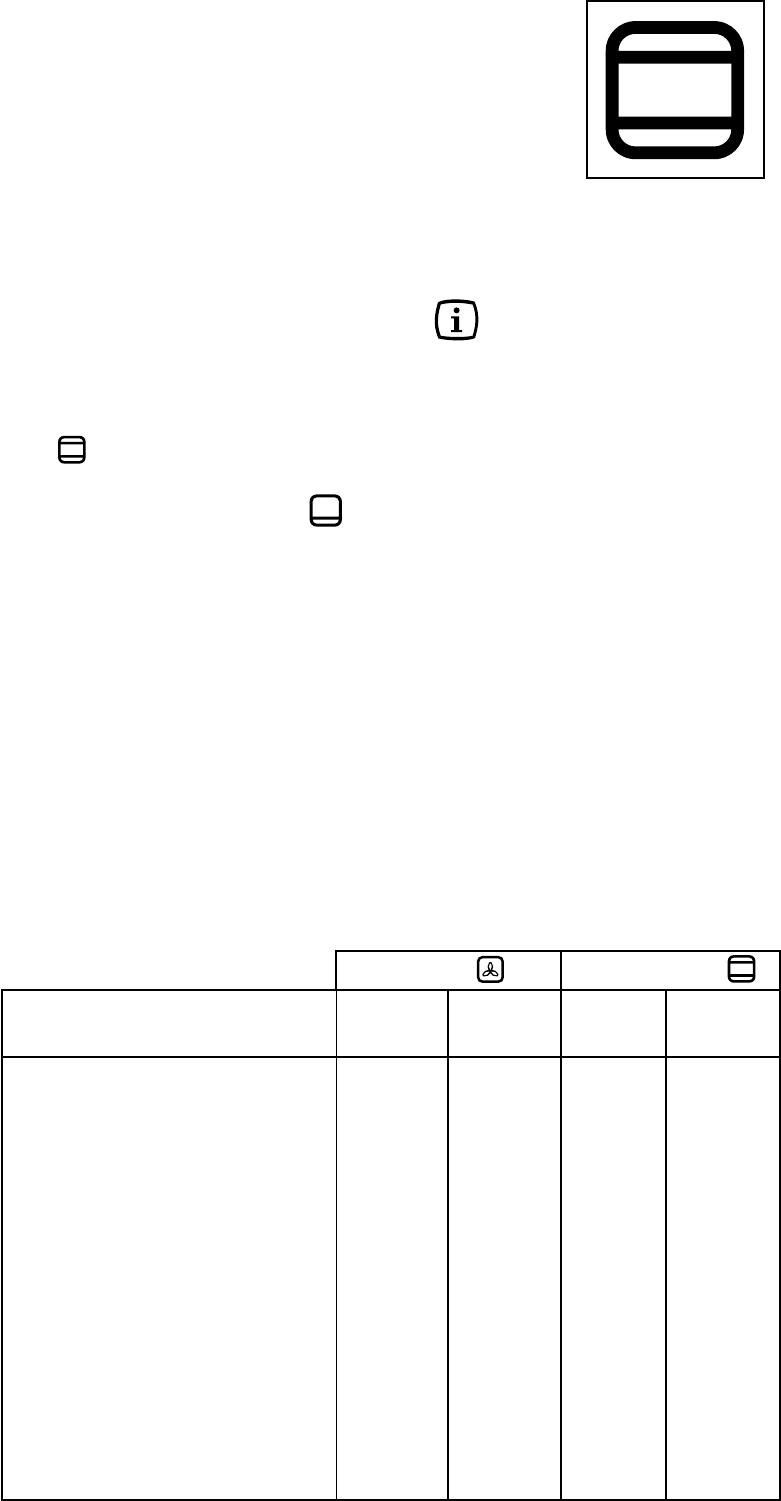
11
The Conventional Oven
When using this setting, heat comes from both the top
and bottom elements. This allows you to cook on a single
level and is particularly suitable for dishes which require
extra base browning such as quiches and flans.
Gratins, lasagnes and hotpots which require extra top
browning also cook well in the conventional oven. This
form of cooking gives you the opportunity to cook without
the fan in operation.
How to Use the
Conventional Oven
1. Switch the oven ON.
2. Select the Conventional Oven Function by pressing
the Oven Function control button until the pilot light to
the left of symbol comes on.
Bottom oven element only
This function is particularly useful when blind-baking
pastry. It may also be used to finish off quiches or flans
to ensure the base pastry is cooked through.
Pre-set temperature is 250°C.
THINGS TO NOTE
During cooking, the cooling fan will operate in the same
way as described for the fan oven function.
CONVENTIONAL OVEN FUNCTION SYMBOL
PRE-SET TEMPERATURE: 200°C
TEMPERATURE SELECTION: 50°C - 250°C
F
Hints and Tips
The middle shelf position allows for the best heat
distribution. To increase base browning simply lower the
shelf position. To increase top browning, raise the shelf
position.
The material and finish of the baking trays and dishes
used will affect base browning. Enamelware, dark, heavy
or non-stick utensils increase base browning, while oven
glassware, shiny aluminium or polished steel trays reflect
the heat away and give less base browning.
Always place dishes centrally on the shelf to ensure even
browning.
Stand dishes on suitably sized baking trays to prevent
spillage onto the base of the oven and make cleaning
easier.
Do not place dishes, tins or baking trays directly on the
oven base as it becomes very hot and damage will occur.
For faster preheating use the Fast Heat-Up Function.
Single level cooking gives best results. If you require more
than one level cooking use the fan oven function.
Cooking Chart - Fan and Conventional Oven
The oven temperatures are intended as a guide only. It may be necessary to increase or decrease the temperatures by 10 °C
to suit individual preferences and requirements.NOTE: Shelf positions are counted from bottom of the oven.
Food Shelf Cooking Shelf Cooking
Position Temp (°C) Position Temp (°C)
Biscuits 180-190 2 - 3 180-190
Bread 210-220 2 210-220
Casseroles 130-140 2 150-180
Cakes: Small and queen 160-170 2 170-180
Sponges 160-170 2 180-190
Madeira 140-150 2 160-170
Rich Fruit 130-140 2 150-160
Christmas 130-140 1 - 2 130-140
Meringues 90-100 2 100-110
Fish 170-190 2 170-190
Fruit Pies and Crumbles 190-200 2 190-200
Milk Puddings 130-140 2 130-140
Pastry: Choux 2 - 3 160-170
Shortcrust
Flaky 190-200 2 190-200
Puff
Plate Tarts 180 1 - 2 190-200
Quiches/Flans 170-180 1 - 2 190-200
Scones 210-220 2 230
Roasting: Meat & Poultry 160-180 2 180-200
Fan Oven
Conventional Oven
Shelf
positions
are not
critical but
ensure that
oven
shelves are
evenly
spaced
when more
than one is
used.
}


















